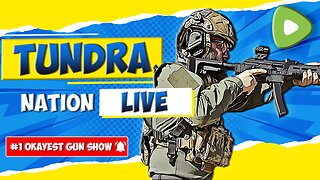Premium Only Content

Bach Partita №3 In A Minor BWV 827 & Partita №4 in D Major BWV 828
Johann Sebastian Bach, a prolific composer of the Baroque era, crafted a set of keyboard masterpieces known as the Partitas. Partita No. 3 in A Minor BWV 827 and Partita No. 4 in D Major BWV 828 are two captivating examples of Bach's musical genius.
Bach composed the Partitas during his tenure as Kapellmeister in Cöthen in the early 18th century. Published as part of his "Clavier-Übung," a collection of keyboard works, these Partitas showcase his skill and artistry in composing for the harpsichord or clavichord. Partita No. 3 in A Minor BWV 827 and Partita No. 4 in D Major BWV 828 represent Bach's exploration of various dance forms popular during the Baroque era.
Partita No. 3 in A Minor consists of seven movements, including a Fantasia, Allemande, Corrente, Sarabande, Burlesca, Scherzo, and a Gigue. Partita No. 4 in D Major comprises seven movements, including an Overture, Allemande, Courante, Aria, Sarabande, Menuet, and a Gigue. Each movement represents a different dance form, showcasing Bach's versatility in composing intricate rhythmic patterns and melodic variations.
Bach's Partitas demand technical virtuosity and interpretive skill from the performer. They encompass complex fingerwork, ornamentation, and contrapuntal textures, highlighting Bach's exceptional command of composition. Beyond their technical intricacies, the Partitas also exhibit emotional depth and expressiveness. Bach skillfully conveys a range of emotions, from introspective melancholy to exuberant joy, through nuanced phrasing, harmonic progression, and dynamic contrasts.
The Partitas exemplify Bach's meticulous attention to structural unity and thematic development. Each movement seamlessly flows into the next, creating a coherent and cohesive musical narrative. Bach weaves recurring motifs and thematic connections throughout the Partitas, uniting the individual movements into a unified whole. This architectural design allows the listener to experience the Partitas as a complete musical journey.
Bach's Partitas have left an indelible impact on the world of classical music. They have become an integral part of the keyboard repertoire, performed and studied by pianists and harpsichordists worldwide. The technical challenges presented by the Partitas continue to inspire and push performers to new heights of virtuosity. Moreover, their captivating musicality and emotional depth make them beloved by audiences, serving as a testament to Bach's enduring musical legacy.
Johann Sebastian Bach's Partita No. 3 in A Minor BWV 827 and Partita No. 4 in D Major BWV 828 exemplify his musical genius. These keyboard masterpieces showcase Bach's mastery of dance forms, intricate compositional techniques, and expressive depth. Their enduring popularity and impact on the classical music landscape affirm their timeless elegance and Bach's unparalleled artistry. As we explore these Partitas, we embrace the brilliance of Bach and appreciate the timeless beauty of his music.
Partita №3 In A Minor BWV 827
I-Fantasia
II- Allemande
III-Courante
IV-Srabande
V-Burlesca
VI-Scherzo
VII-Gigue
Partita №4 in D Major BWV 828
I-Overture
II-Allemande
III-Courante
IV-Aria
V-Sarabande
VI-Menuetto
VII-Gigue
#classical_music #Bach #partitaiva
-
 48:22
48:22
Classical music_Music Inspiration
1 month agoHector Berlioz Fantastic Symphony
771 -
 2:15:09
2:15:09
Badlands Media
22 hours agoDevolution Power Hour Ep. 375: Obama’s Orders, Ukraine’s Collapse & the Inversion of Justice
287K69 -
 2:32:03
2:32:03
BlackDiamondGunsandGear
11 hours agoAFTER HOURS ARMORY w/ DLD & John from GOA & FLR
23.6K3 -
 1:05:28
1:05:28
Man in America
12 hours agoTREASON? Obama, Hillary, and Soros in the New World Order Agenda EXPOSED w/ Mel K
81.8K59 -
 2:22:46
2:22:46
The Connect: With Johnny Mitchell
13 hours ago $4.62 earnedOne Man's Mission To Stop Human Trafficking: How A Billionaire Mercenary Saved Hundreds Of Children
20.7K14 -
 2:35:13
2:35:13
Tundra Tactical
8 hours ago $10.12 earned🔫 California Ammo Win, Sig Sauer P320 Controversy, Meme Review & Would You Rather! 🎉🔥
38K5 -
 16:24
16:24
Forrest Galante
5 hours ago6 Deadliest Man Eaters to Ever Exist
26.5K3 -
 10:14
10:14
MattMorseTV
10 hours ago $15.13 earnedThe EU is in HOT WATER.
94.4K55 -
 LIVE
LIVE
The Rabble Wrangler
1 day agoPUBG with The Best in the West!
640 watching -
 3:57:19
3:57:19
EvilT4000
9 hours ago $6.89 earnedSaturday.....🟢For energy and focus click my Dubby link!
35K3